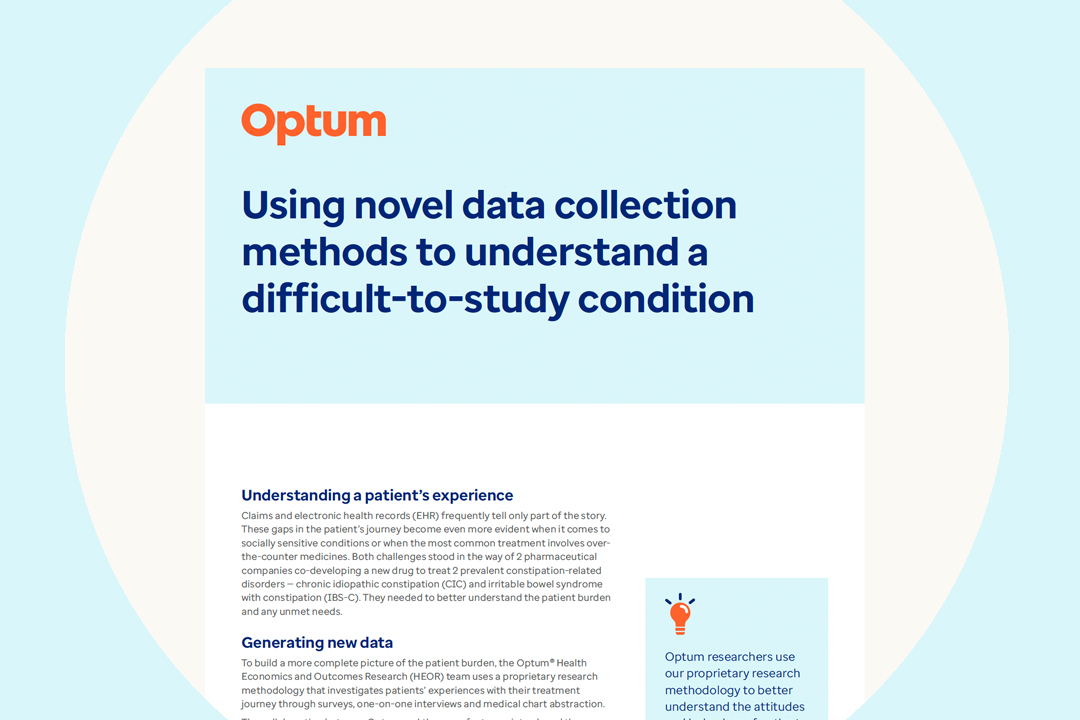Integrate patient and provider voices into your research
Claims and electronic health records (EHR) frequently tell only part of the story. Patients don’t always take their medications as prescribed, or they may have unexpected side effects. Their conditions may be affecting their whole family, or their work productivity may be affected by their treatments.
And while physicians commonly document their interactions with patients, they may not disclose their own attitudes about a condition, its treatment options or its economic burden. It’s important for life sciences companies to capture patient experiences and physician perspectives that come from a range of sources, including regulatory guidelines, social media and patient interactions. This is where our Voice-to-Claim research methodology comes into play.
The Optum Health Economics and Outcomes Research (HEOR) team works with our clients to define a study-specific cohort and works with a third party to reach out to patients and their physicians to participate in Voice-to-Claim research.
We link the new intelligence back to cost and utilization information that’s derived from de-identified clinical or claims data — all while maintaining patient privacy. Our HEOR researchers never see identifiable data, protecting the interests of both the patient and the sponsor. These new data can help clients close critical gaps in knowledge and uncover greater levels of insight.
Case study
Explore the full patient journey
See how Voice-to-Claim research was used to help 2 pharmaceutical companies understand a difficult-to-study condition.

Meet our experts
Optum researchers have diverse backgrounds, many at the doctorate level, in psychology, sociology and health services research.
Rifky Tkatch
Director, Primary Data Collection
Valery Walker
Director, Primary Data Collection
Yiran Zhang
Senior Researcher, Primary Data Collection

Explore Voice-to-Claim publications
Since 2009, Optum HEOR has contributed over 200 conference presentations and publications in peer-reviewed journals from primary data collection studies covering a broad range of conditions, outcomes and methods.
Related content

Novel data collection for a difficult-to-study condition

Strengthen your value story with HEOR




